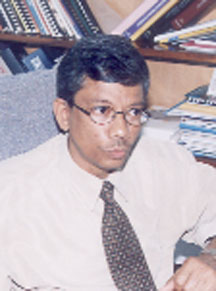Medical Director at Georgetown Public Hospital Dr Madan Rambarran says the institution has a mass casualty preparedness plan and was equipped to handle the influx of patients injured in the recent grenade explosion in the city.
The explosion, which left one man dead and 18 persons nursing various injuries, occurred on Wednesday at the Stabroek Market square. Two of the injured remain hospitalised and may lose sight in their right eyes.

The rush at the hospital’s emergency unit following the explosion did not result in any panic, Rambarran said, adding that the usual arrangements at the unit adequately covered the situation. He said no other level of response had to be triggered after the patients were rushed there. “The installed capacity was able to deal with it,” he stated.
Rambarran told Stabroek News yesterday that the hospital’s mass casualty preparedness plan lays out a structured response in the event of a major crisis. Fortunately, he said the plan has not been activated since the decision to do this is based on the scale of the problem.
Emergency room doctors are aware of the plan, he said, and once patient numbers are ballooning at the Accident and Emergency Unit (A&E ) procedure stipulates that they trigger the second level of the plan which means alerting management and consequently, mobilising resources from within the hospital. He said that in addition resources would be drawn “from some places where the workload is not as heavy.”
Rambarran stated that the second level response also includes expanding the physical space of the emergency room by setting up additional consulting units in other areas close by. According to him, some clinics such as the chronic diseases follow-up clinic could easily be closed to provide the hospital with additional space and personnel. He said too that the elective surgeries could be put off at the operating theatre to free up space there. “We have programmes in place to respond to a particular problem based on the scale of it and depending on this, we can also establish an incidence command centre,” he added.
Rambarran explained that 200 to 300 patients turning up at the emergency room at one time could trigger the incidence command centre, which involves a network of people who would execute the plan in a structured way.
Rambarran said that mass casualties involving close to 200 persons could result in staff being called out from vacation, in addition to the hospital negotiating with other private institutions in the country to take on some of the patients.
But the response begins from the triage stage, he pointed out, adding that hospital staff are trained as to how to triage patients in terms of which cases are more critical. Based on the findings after triage, he said, some patients could be sent home while others might need surgeries and or admission into the hospital.
As regards the patients from the recent explosion, Rambarran said none had life threatening injuries, “which was a good thing.” He said the persons still in hospital are doing well, but that doctors continue to closely monitor them.





